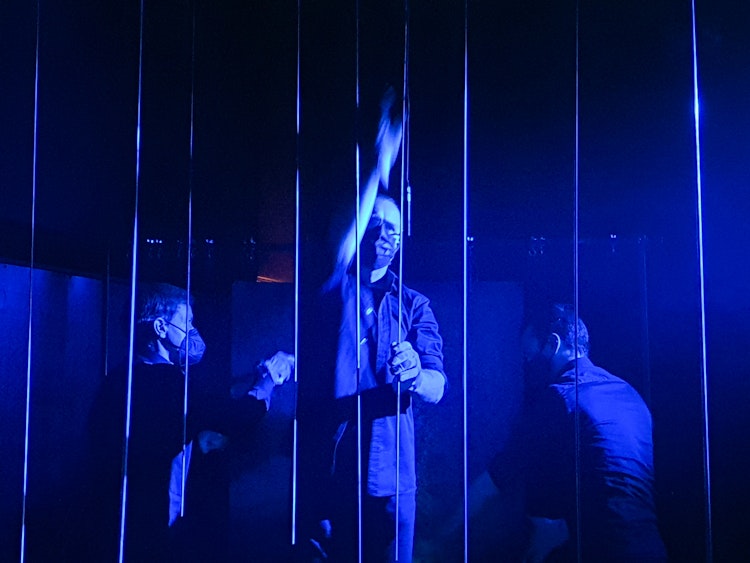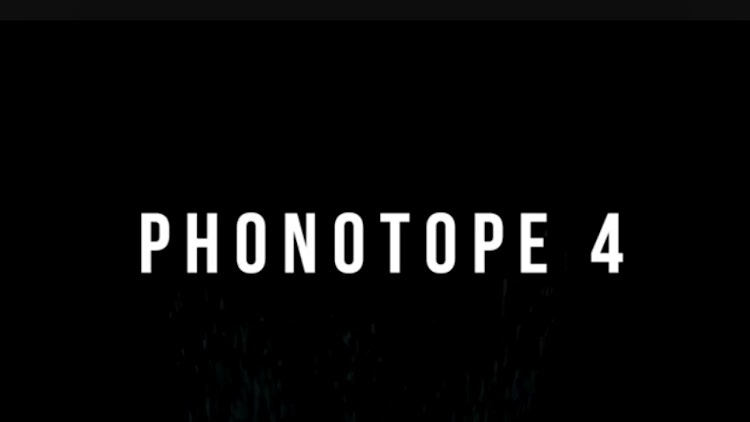Tomas Nilsson, Carle Lange, Kristin Solberg
Martin Gautron, Loïs Drouglazet, Oliver Edwards
Kjetil Skøien
The contemporary composer Rolf Wallin presents the concept and process behind the performance Phonotope 4, created and performed by Wallin, SISU Percussion Ensemble and scenographer Carle Lange. Phonotope 4 works within the physical and visual realm, where they have explored questions like: ‘How to make "water-like" music with instruments made of water?’ and ‘How to build a fire instrument that sounds like fire?’
My first phonotope, Phonotope 1, was developed in 2001 at the computer music studio IRCAM, Centre Pompidou, Paris.1 The electronic environment was then populated by the Arditti String Quartet.2 The musicians do not play from a regular score. Instead, they are following sets of rules, like in a card game. And instead of seasons, they go through the five traditional Chinese elements: wood, fire, earth, metal, and water – which by the way symbolise (among many other things) the five Chinese seasons: spring, summer, late summer, autumn, and winter. Each element has its very specific qualities that transform the phonotope, just as the seasons completely transform a landscape and the plants and animals that live there.


One would think that the biggest challenge would be: how to build a fire instrument that sounds like fire?
Since the premiere, four other phonotopes, with completely different instrument combinations, have seen the light of day. Their associations with the five traditional Chinese elements have been exclusively musical/auditive. But when SISU Percussion Ensemble went into realising the fourth phonotope, they contacted scenographer Carle Lange to take a definite step into the physical and visual.3 They began a long process to construct instruments made of these five elements, which also could be able to produce music sounding like the element they were made of: how to make "water-like" music with instruments made of water?
One would think that the biggest challenge would be: how to build a fire instrument that sounds like fire? But the answer was already invented by Carle Lange: the musicians play with electrified hammers, metal sticks, and brushes over electrified metal rods, nail boards etc., flaring bursts of sparks when they make contact.

Lange placed these five collections of instruments in a fascinating landscape: around a pentagonal central water mirror. Each of the five stations with one instrument setup reside on each side of the pentangle, illuminated in complementary colours. The musicians move from station to station. The audience can also move freely around the edge of this landscape so that they can experience it all from different angles during the performance.
The three musicians have an important partner: a computer. It plays a prelude and a postlude to each of the five movements, while the musicians walk in procession to the next element, and it processes what the musicians play electronically in real time and sends it out over a surround sound system. This sound has been given a visual counterpart in abstract black and white patterns projected onto a pentagonal pyramid of mirrors. The forms, again inspired by the five elements, are in constant motion, paralleled in activity with the music flowing from the computer.
Stage director Kjetil Skøien has been important in refining the musicians' movement in this landscape, and in the relationship with the instruments and each other, so that Phonotope can be experienced as a mysterious ritual. A ritual for what? Difficult to say, but it seems absolutely vital to the three musicians – and, who knows, perhaps also for all the rest of us who are present?
Expertise
Wood – Trond Solberg, Julius Winger
Water – Bodil Diesen, Anders Hovind, Terje Andresen
Earth – Kristin Solberg Hylin
Metal – Marcus Martinuzzi, Ståle Larsen
Fire – Terje Andresen
